"Arre huzoor, wah Taj boliye!" *
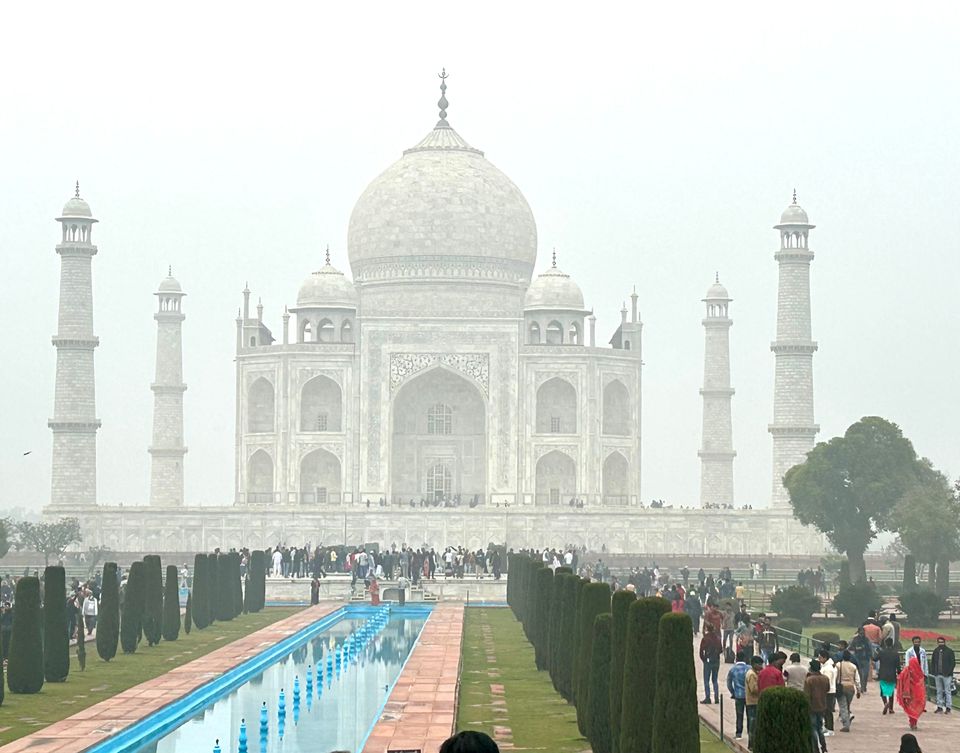
The traffic was unyielding in Agra that misty morning. Amidst the blaring horns and near miss collisions, trucks, motorcycles, and cars competed for space on the narrow roads that led to the Taj Mahal.
We parked our car, and street vendors surrounded us immediately.
"Ma'am, ye dekhiye pure marble ka Taj Mahal," said one, taking out a miniature replica of the Taj from his bag.
("Ma'am, see this pure marble Taj Mahal").
Another shoved a bag of masks and shoe covers in my face.
"Ye andar lagega, Ma'am."
("This will be required inside, Ma'am.")
While yet another offered to take us "right to the entrance of the Taj Mahal, Ma'am."
Polite "No, thank you's" were no match for these persistent businessmen. We bought some shoe covers and masks and headed to the west gate of the Taj Mahal - The Fatehpuri Darwaza.
The history of this ancient wonder of the world is common knowledge.
Of the king who built an architectural marvel to honor a beloved wife's death. A mausoleum of such symmetry and beauty that 20,000 workers and 1000 elephants worked tirelessly for 17 years to bring it into existence.
But that misty morning, just knowing that Shah Jahan loved Mumtaz Mahal was not enough. I wanted more.
We hired a guide right at the entrance of the west gate.
"Besht Taj Mahal dikhaunga, Ma'am," he claimed. I smiled.
("I will show you the best Taj Mahal, Ma'am.")
After some haggling, we settled on a price. And off we went.
Tickets and Security
- Having purchased our tickets online, we got through this part fairly quickly. Tickets are offered for the outside views as well as inside the mausoleum. We bought tickets to view both.
- Prices for Indian citizens and non-citizens vary. OCI cardholders avail Indian citizen rates.
- We had to go through a mini airport style security check at the west gate entrance.
- For more details on ticketing and hours, click here.
The Entrance

- Visitors can enter the Taj complex via three gates in the east, west, and south directions - The Fatehabad, the Fatehpuri, and the Sirhi Gates, respectively (see map above).
- Only the East and West gates are open to visitors. We entered via the west gate.
- The west gate opened into the Forecourt Zone - The Jilaukhana.
The Main Gate (Darwaza-I-Rauza)
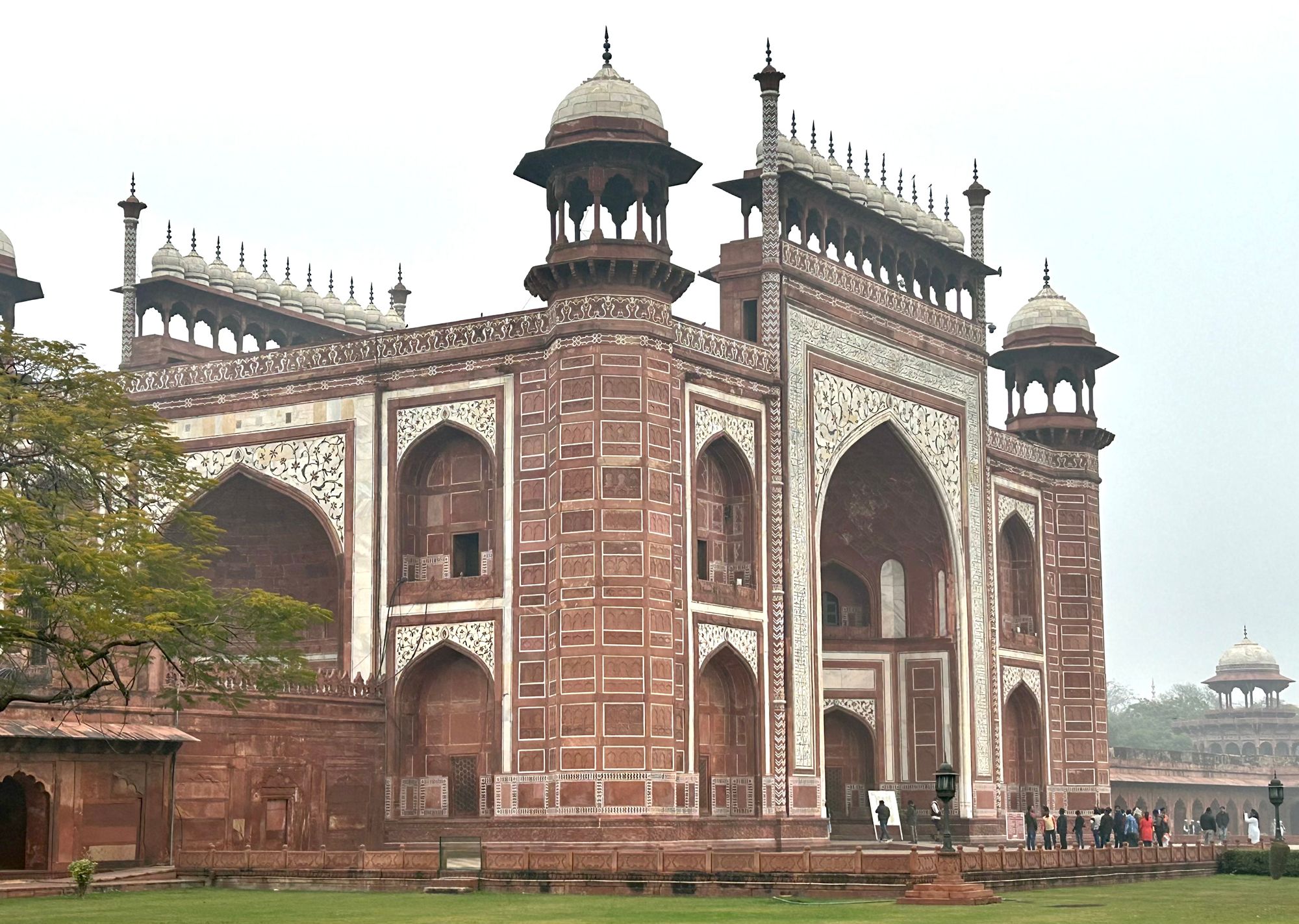
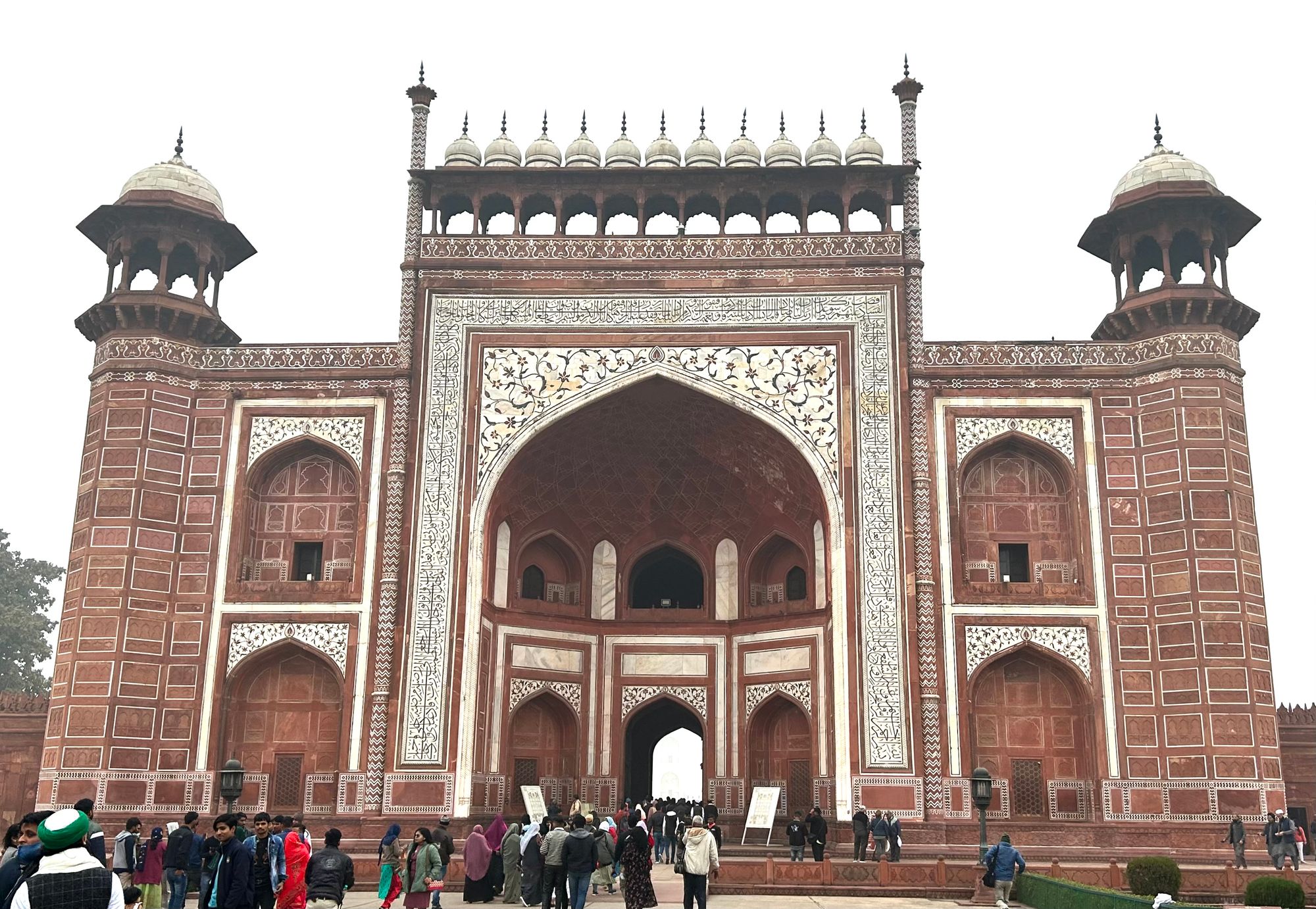
- The Darwaza-i-rauza, or 'gate of the mausoleum', is the main entrance into the Taj Mahal.
- As we entered this gate, I could not help but marvel at the symmetry with which everything around me was built.
- A breathtaking view of the Taj was right in the center of the Darwaza-i-Rauza.
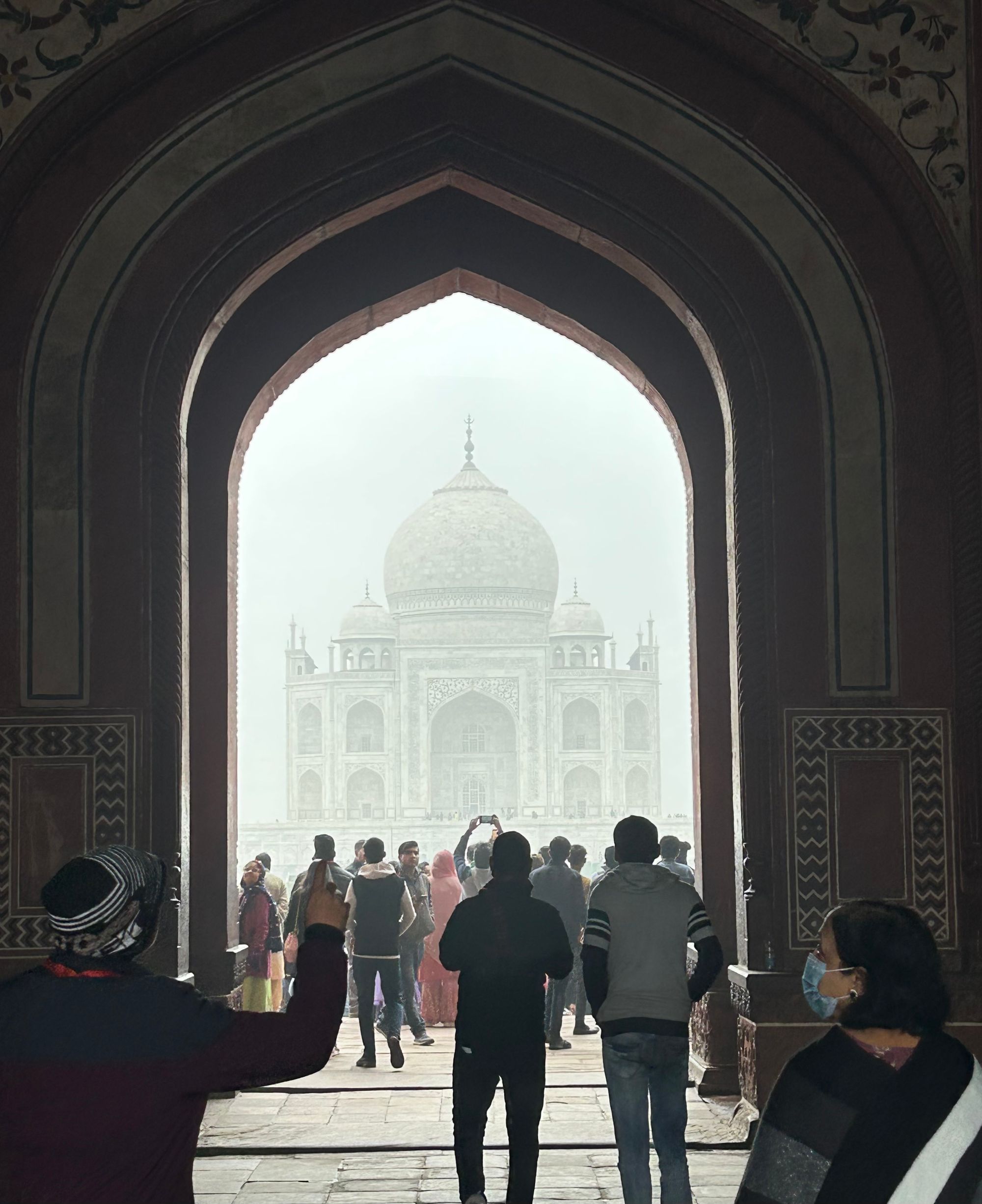
The Gardens and the Pool
- We were greeted with greenery and water on the other side of the Main gate.
- The 'Charbagh' or garden complex consisting of 16 smaller gardens and walkways formed the front yard of the Taj Mahal.
- The ornamental pool, with its radiating line of fountains, stood right in the center of the garden complex.
- For more detailed information on this area, click here.
The Main Mausoleum
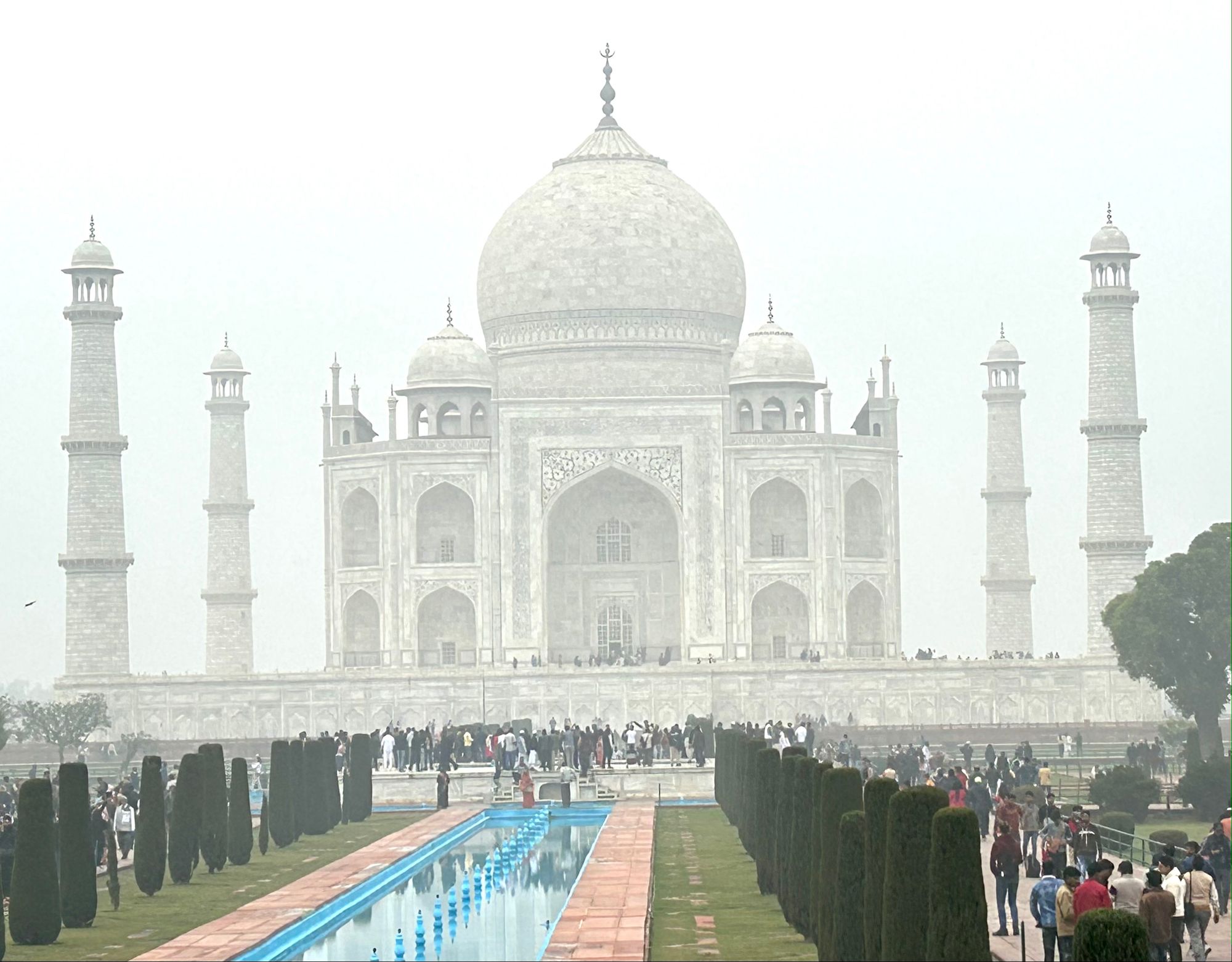
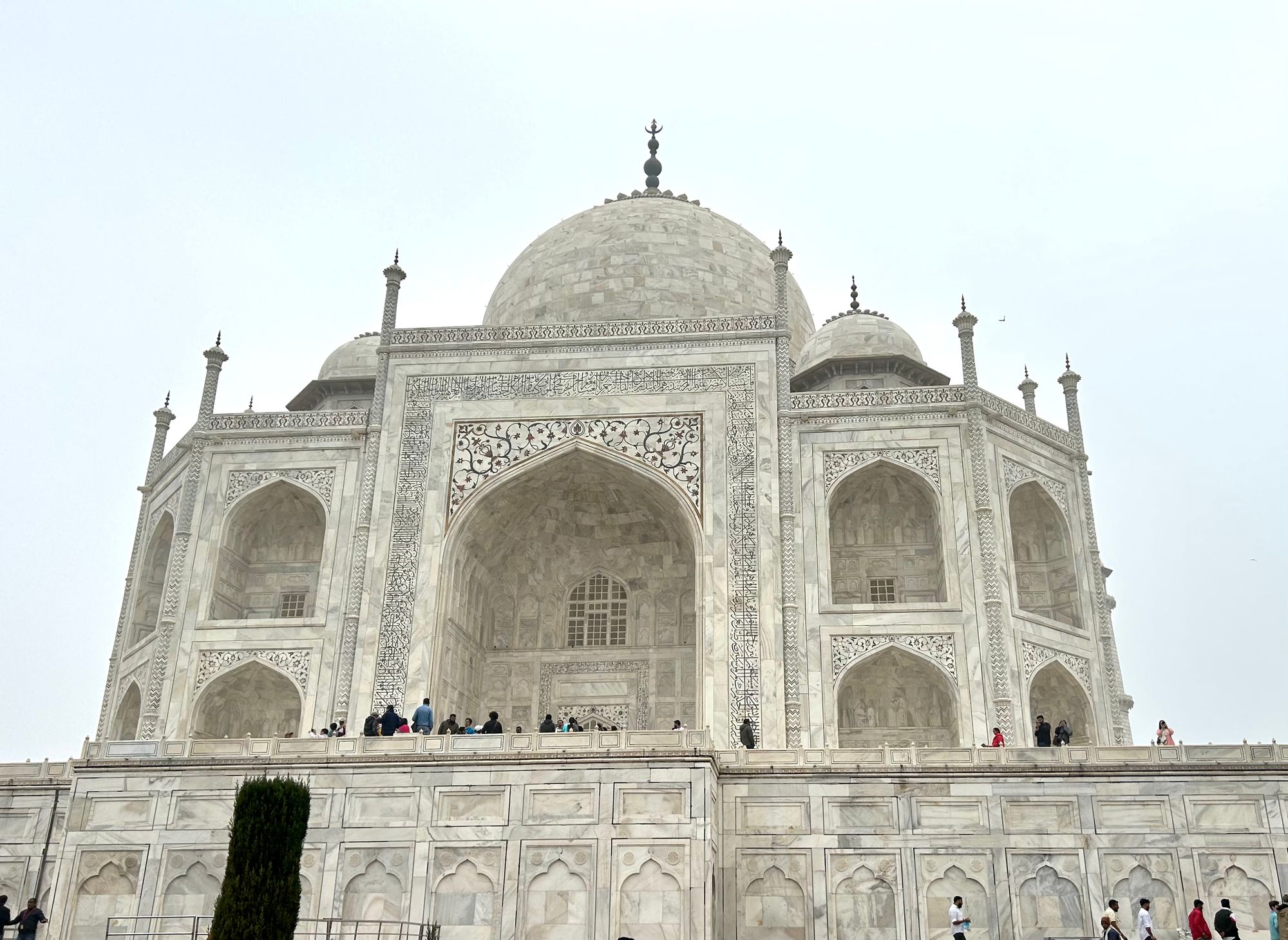
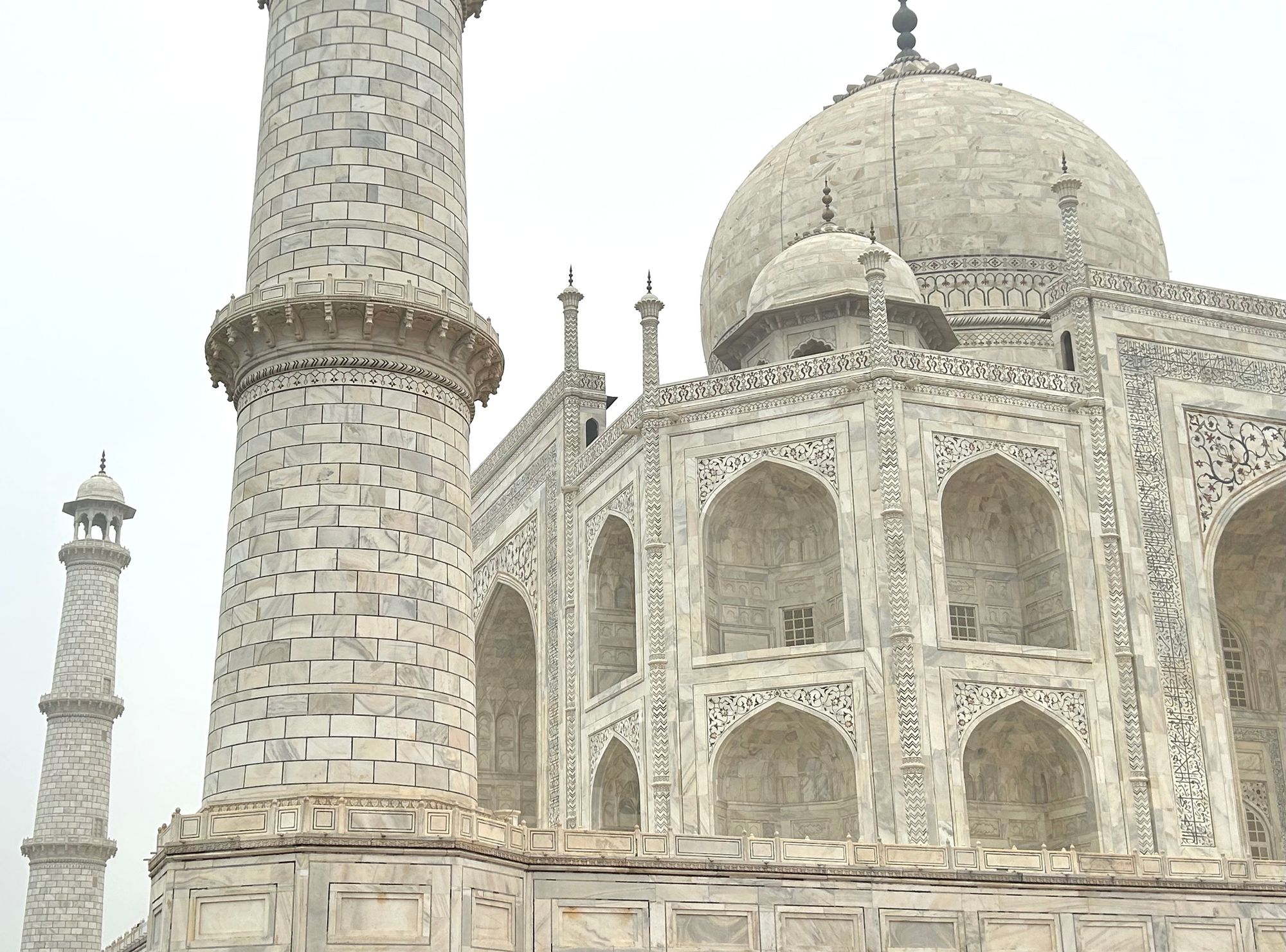
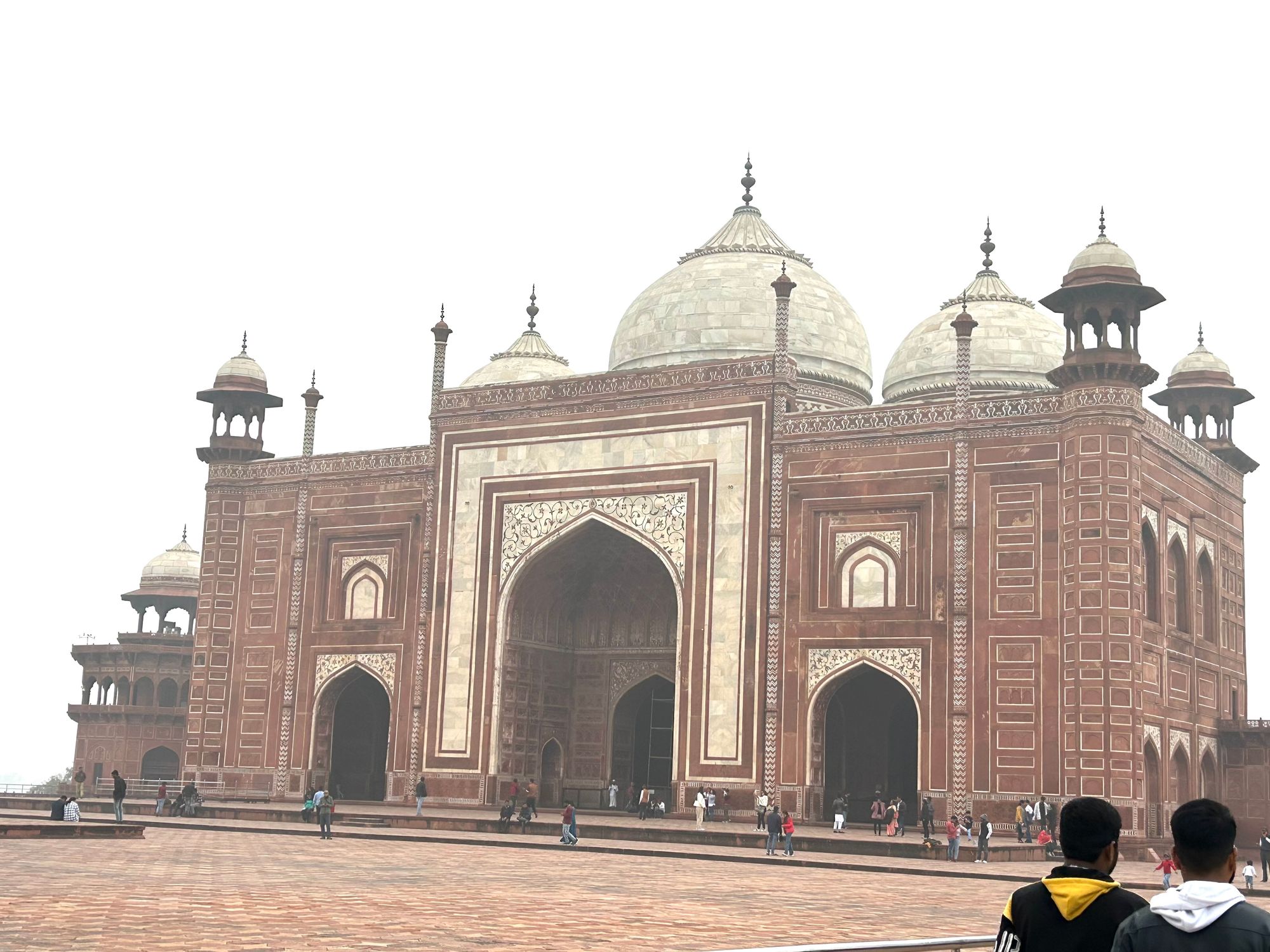
- The main mausoleum is the heart of the Taj Complex.
- Set in the serene Mughal Garden, the monument stands on a raised marble platform, with its back towards the Yamuna River.
- The four sides of the Taj Mahal show perfect symmetry and feature impressive vaulted arches embellished with exquisite details.
- The original tombs of Shah Jahan and Mumtaz Mahal are housed here but were closed off to the public.
- A replica of the graves has been re-created on the central floor, and this is what we visited.
- On either side of the main mausoleum were two identical buildings - the mosque and Mihman Khana or the guest house.
- Local muslims offer prayers at the mosque on Fridays. Hence, the Taj Mahal is closed to general visitors on this day.
- Photography was not allowed in the tomb area, and shoe covers were required.
- For more detailed information on the mausoleum, click here and here.
The Details
- The attention to detail in the work that adorned the pillars and walls of the Taj Mahal was truly remarkable.
- Floral and geometric patterns were in every nook and corner. The flowers, chiefly lilies, mirrored the Mughal love for gardens.
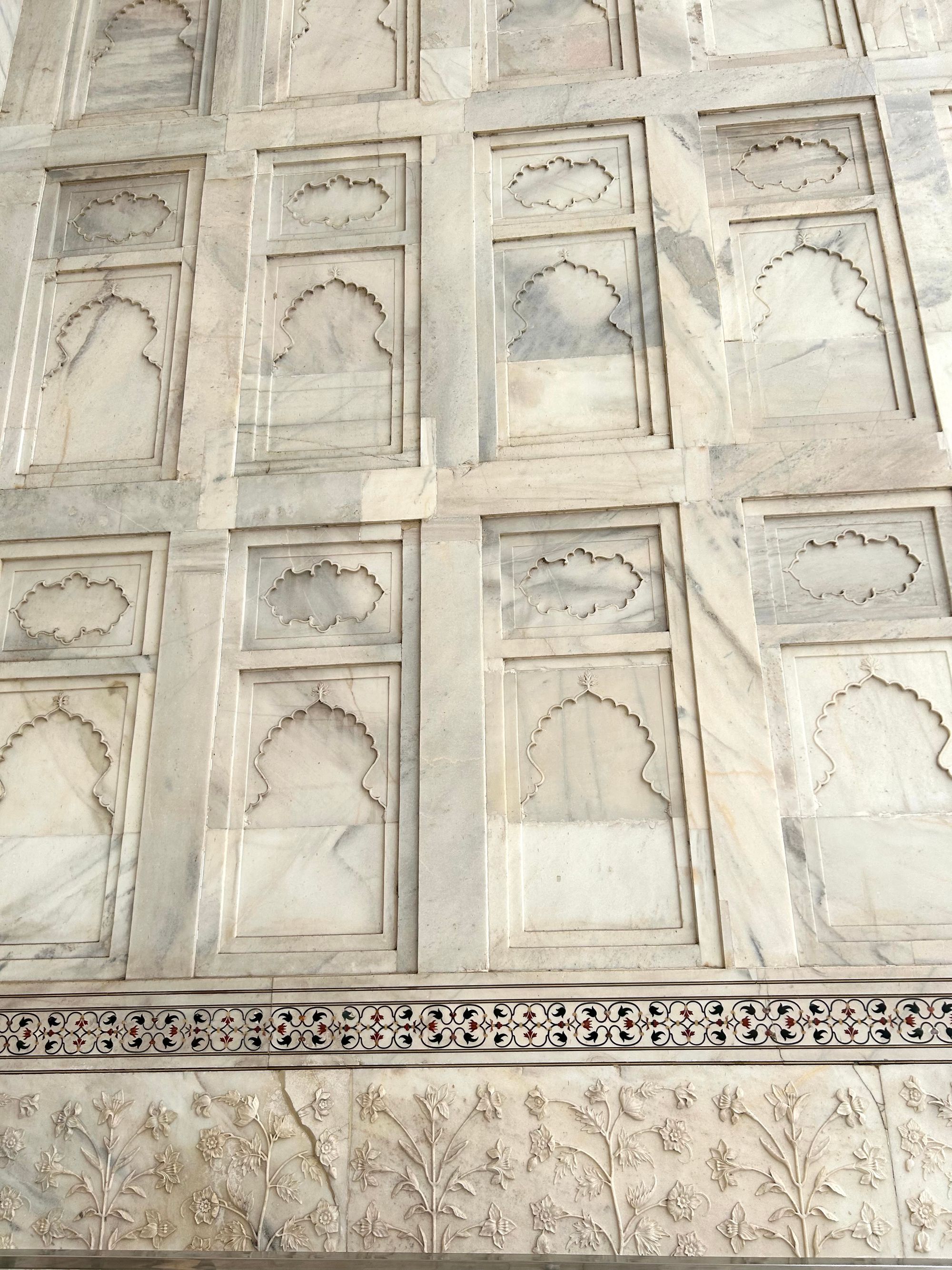
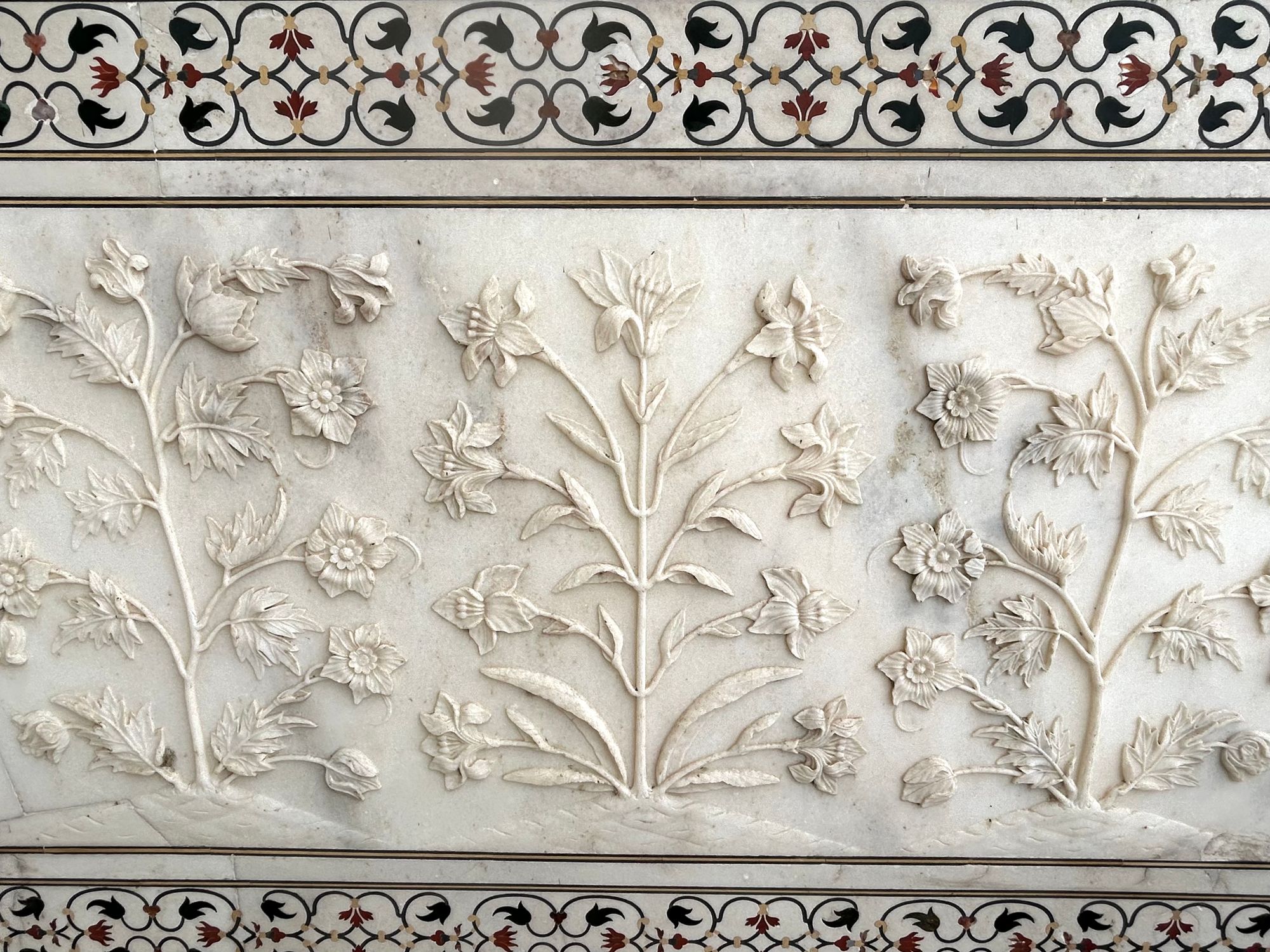
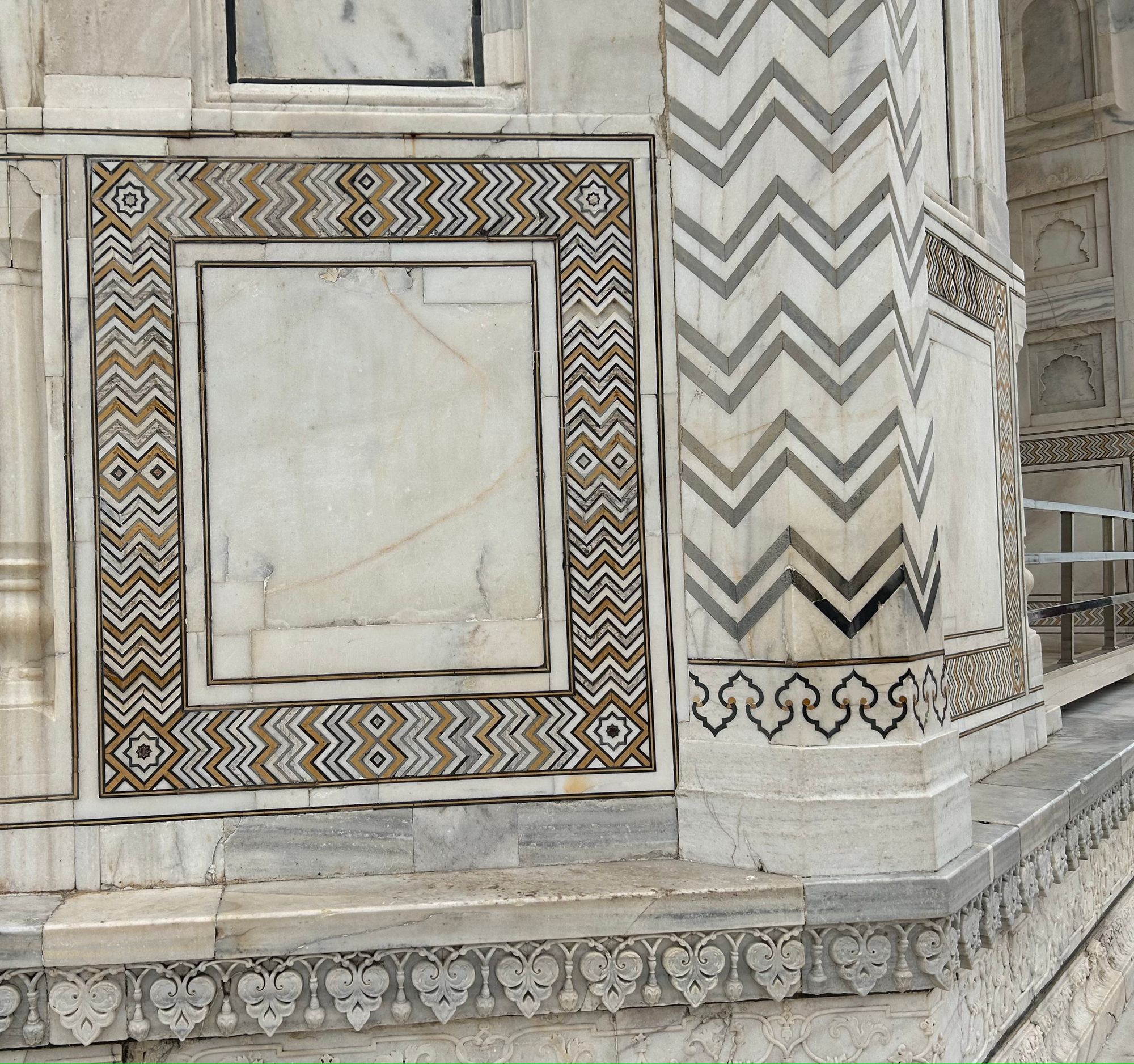
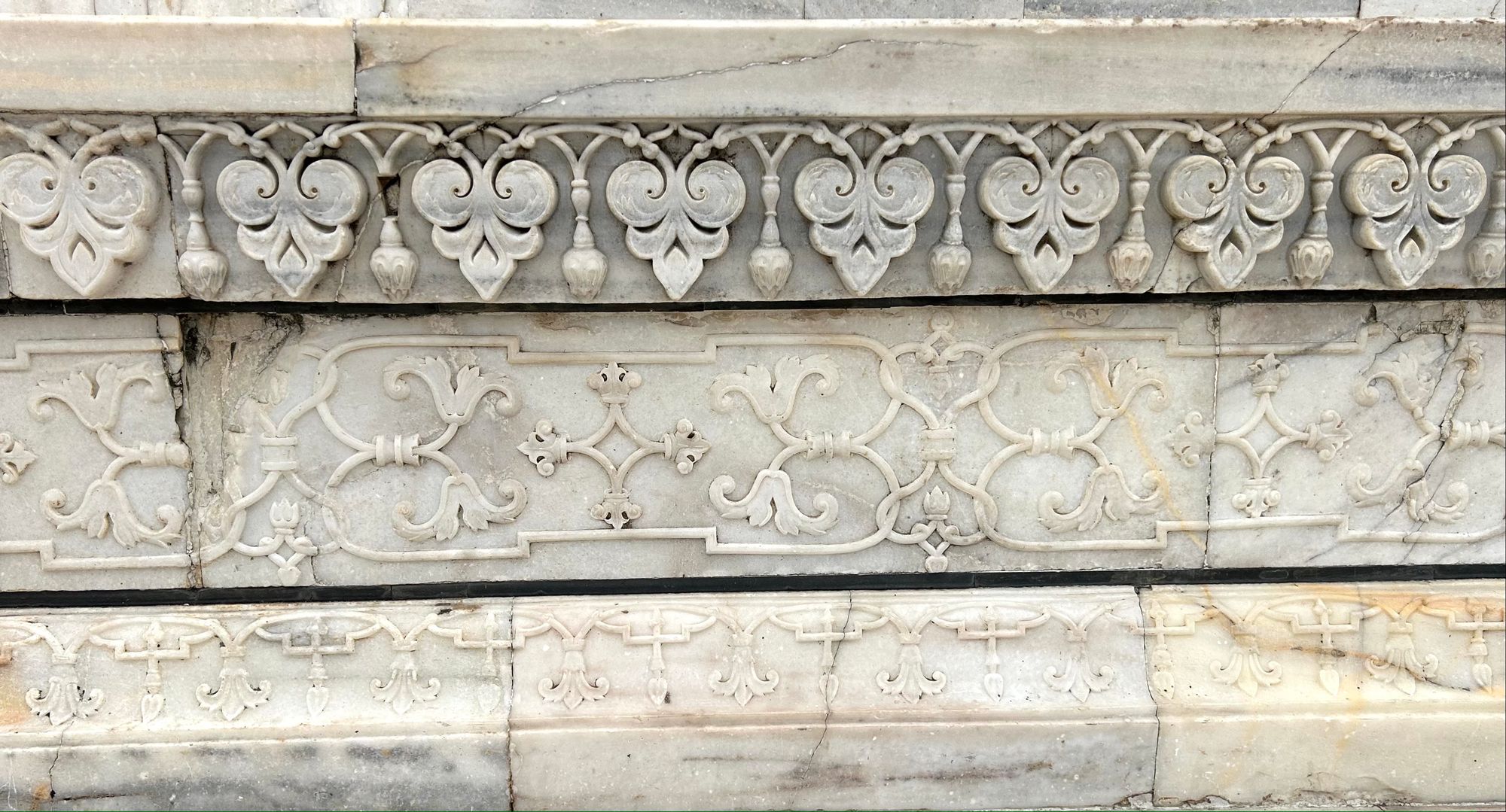
Throughout the complex, passages from the Quran were used as decorative elements.
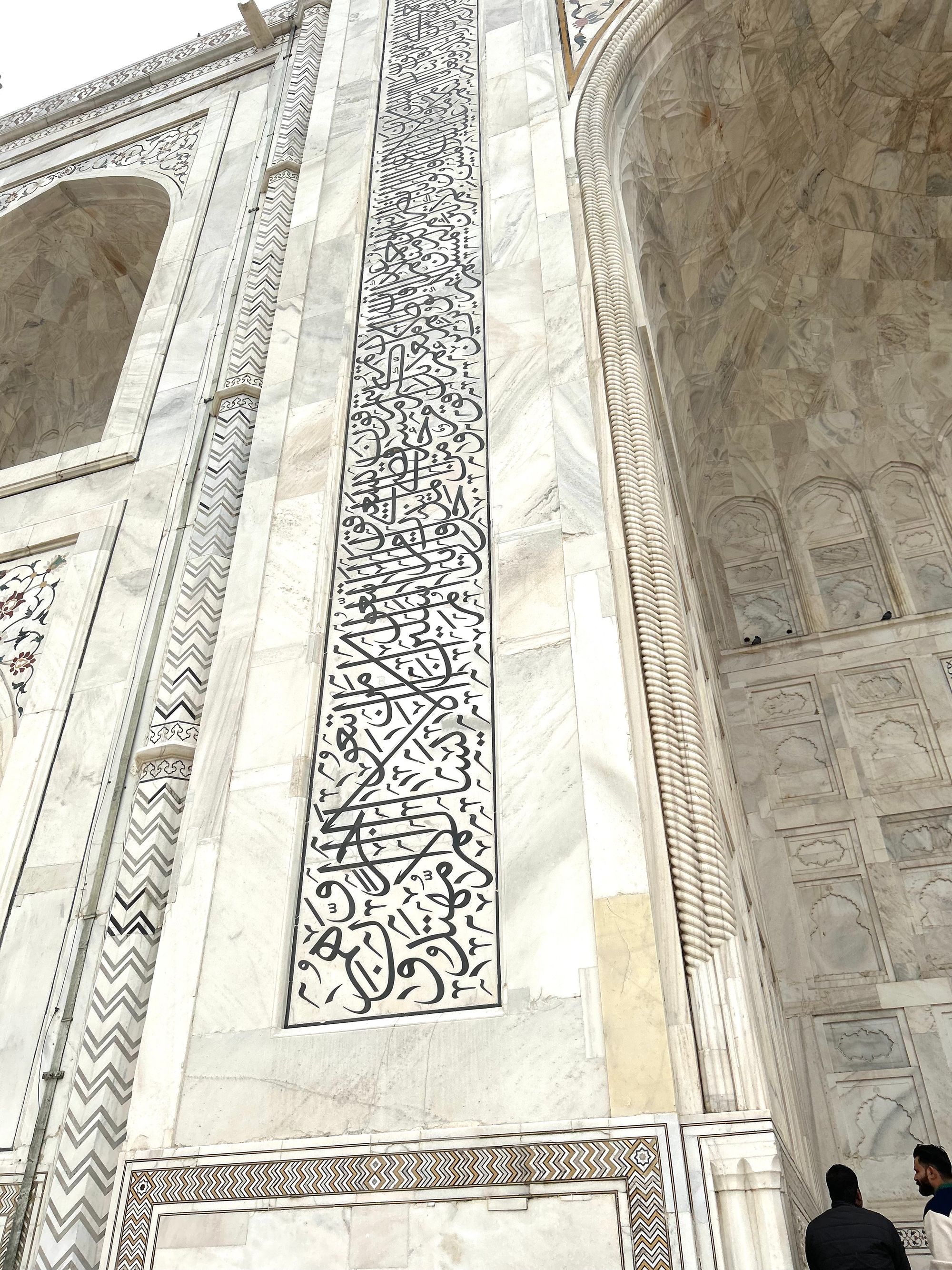
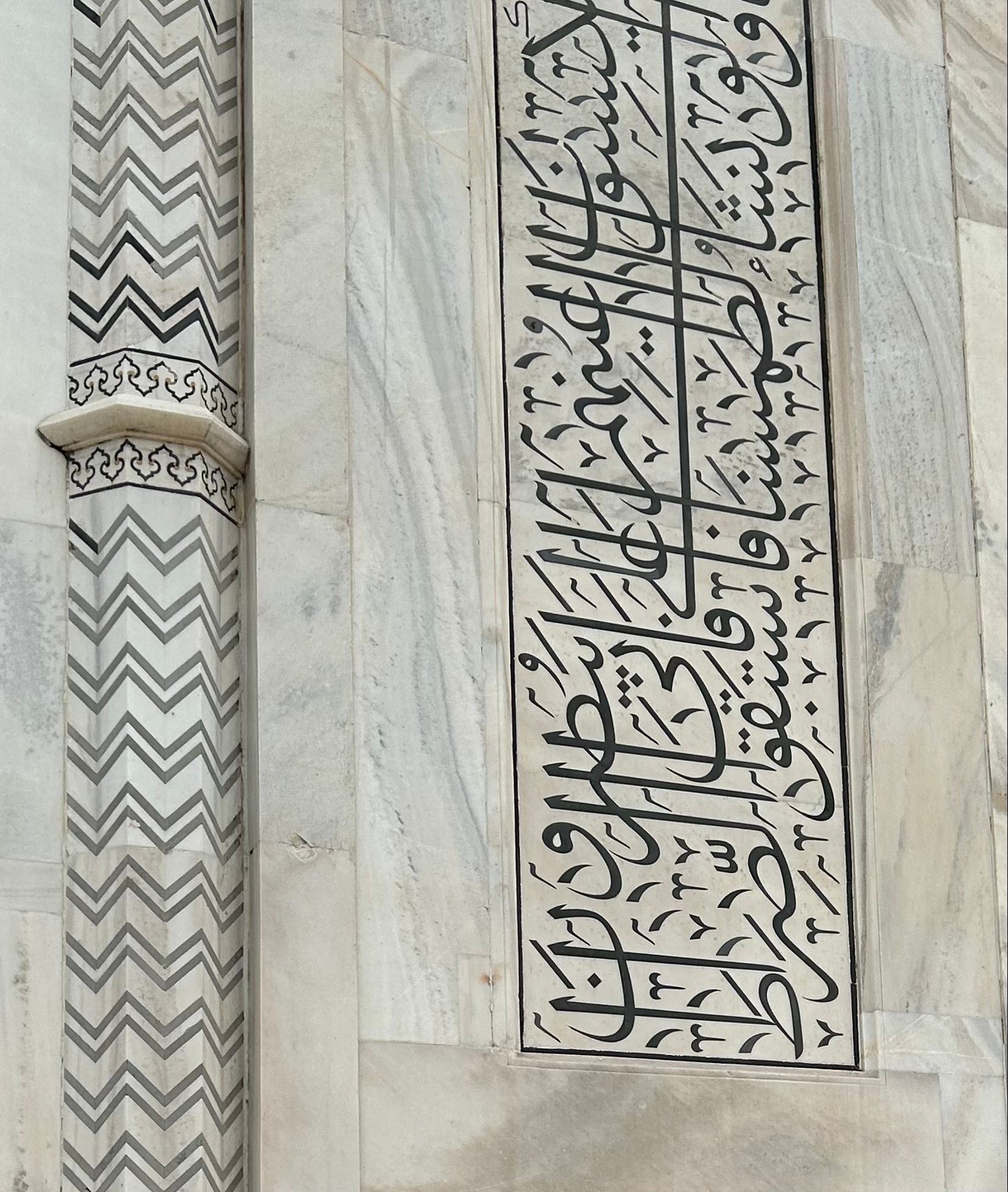
Behind the mausoleum, was the Yamuna river. A once beautiful river, now, filthy due to overuse and neglect. I was able to get a shot of the 'clean' side of the river but was saddened to see the state it was in.
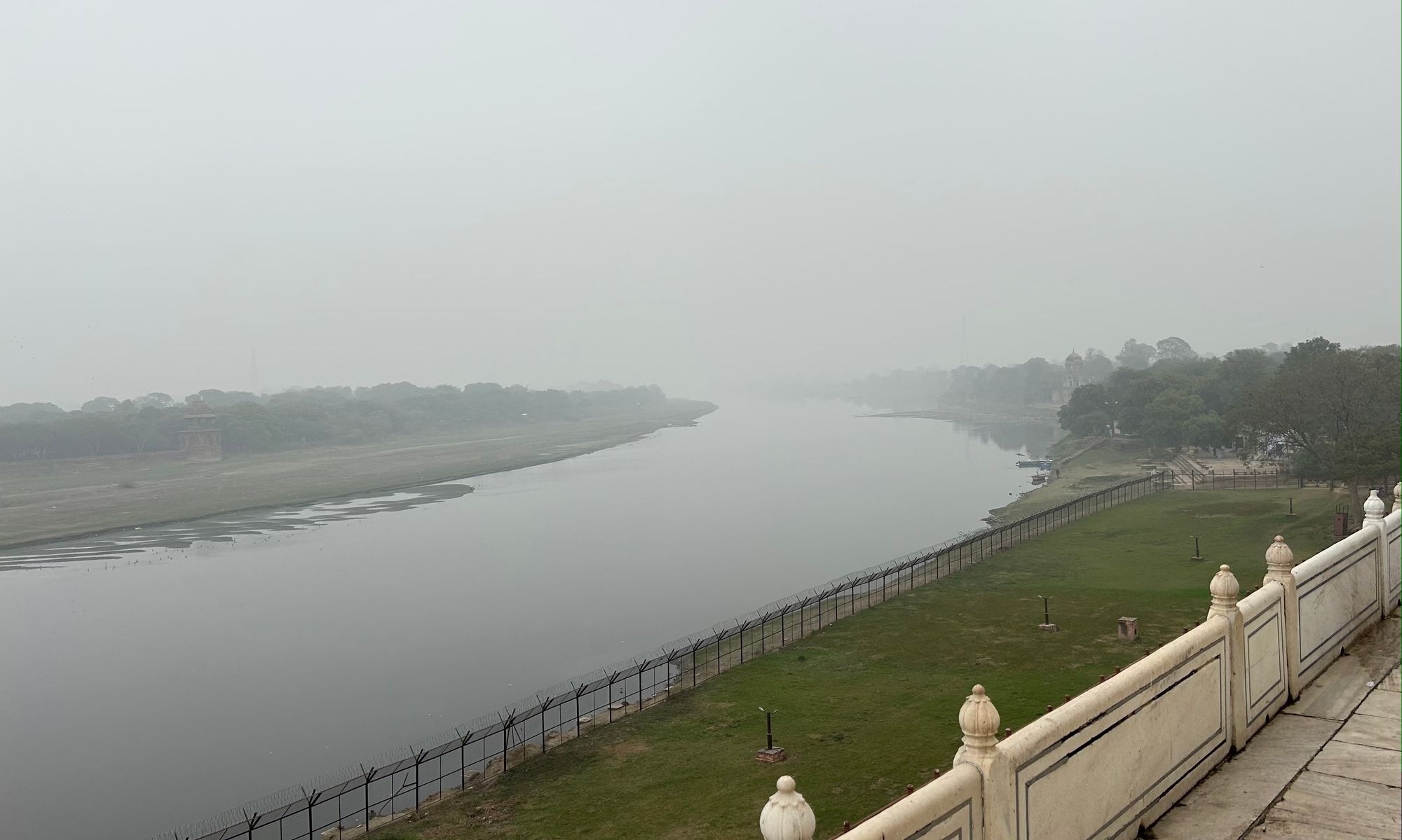
The Absolute Best
As our tour ended and we headed back towards the west gate, I glanced at the Taj one last time.
It showed signs of wear but stood tall and strong against the test of time. The sheer talent of the architects and artisans immortalized in this work of art.
I was genuinely thankful for having had the opportunity to appreciate their work....and for my guide.
The same guide, who had been with us for almost 2 hours by now, clicking pictures and explaining this and that.
"Besht Taj Mahal dikhaya na? Ma'am", he asked smiling.
('Didn't I show you the best Taj Mahal? Ma'am.')
I smiled back, handing him a dollar amount far more than what we had agreed upon.
"Bilkul best", I replied as we parted ways.
('The Absolute best.')
Resources
- The Official site of the Taj Mahal - Government of India.
- A Tour from the Top - Google Arts and Culture
- UNESCO World Heritage Site - The Taj Mahal.
*Arre Huzoor Wah Taj Boliye was the tagline of a very famous tea campaign in India, featuring the Taj Mahal. It informally translates to 'Hey Mister, say wow Taj'.





Comments ()